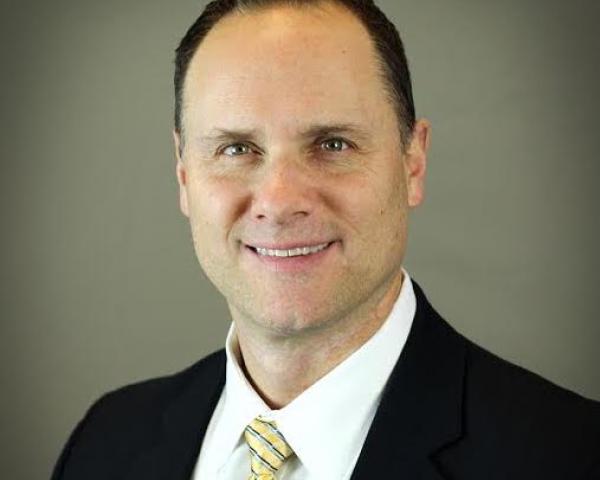OSHA is in something of a holding pattern while it awaits a new administrator. Nevertheless, now is not the time for employers to let their guards down.
The agency has operated under the acting leadership of Loren Sweatt since July 2017. The president’s October nomination of Scott Mugno, vice president of safety at FedEx Ground, to be the next OSHA administrator continues to be delayed amid political wrangling. With many career agency personnel in place, enforcement looks similar to the Obama administration in many ways.
Overall Trends
"Confusion, compliance and anticipation" is the phrase that best sums up OSHA during the first year-and-a-half of the new administration. There have been delays in enforcement and effective dates for some regulations; however, OSHA has not retreated from inspections or enforcement activities.
Expectations for a more business-friendly environment under the Trump administration have yet to materialize, although there have been signs that there will, ultimately, be moves toward deregulation and less aggressive enforcement.
No long-standing regulations have yet been repealed, which is not surprising, given the lack of a permanent leader and the fact that OSHA regulations cannot be revoked solely for economic reasons.
However, we have seen activity on regulations that were already in process. They are among the clear indications that the Trump administration plans to take a different tone than the Obama administration:
2-for-1 Requirement. The president’s signature on Executive Order 13771 requires agencies to eliminate two regulations for every one promulgated.
Rule changes. The president employed the rarely used Congressional Review Act to repeal 14 regulations, including:
- The Volks Act. The president effectively overturned the rule that made recordkeeping requirements a continuing obligation for employers. Essentially, OSHA had the ability to enforce recordkeeping requirements for five-and-a-half years, rather than six months.
- Fair Pay and Safe Workplaces Rule. The president signed a resolution that blocked the Obama-era rule requiring federal contractors to disclose and correct serious safety and other labor law violations.
Rule movement. Several OSHA rules have been moved to "long-term actions" or completely eliminated from the administration’s first two regulatory agendas.
- 1. Removed from regulatory agendas:
- Vehicle backing hazards
- Updates to chemical permissible exposure limits (PELs)
- Comprehensive combustible dust rule
- Hearing protection in construction
- 2. Moved to long-term actions, essentially putting them on an indefinite delay:
- Workplace violence
- Emergency preparedness and response
- Process safety management (PSM) rule reform
- Infectious diseases in healthcare
Another signal of the Trump administration’s intentions toward deregulation is the changing of the name "Regulatory Agenda" to "Unified Agenda of Federal Regulatory and Deregulatory Actions."
See also: Health Consumerism, Stress Management
Controversial Initiatives
Employers need to be aware of several regulations in the pipeline to ensure they understand and comply with the requirements.
Electronic Recordkeeping
OSHA’s effort to improve tracking of workplace injuries and illnesses requires certain employers to electronically submit data they are already required to keep. But there has been significant confusion and consternation over the standard. One issue is the implementation schedule.
There are clear indications that OSHA intends to amend this rule to ease some of the requirements on employers. As it appears now, the deadlines are:
July 1, 2018: Employers with 250 or more workers, and those with 20 - 249 employees in "high-hazard industries," must electronically submit information from their 300A annual summaries of work-related injuries and illnesses.
March 2, 2019: Every establishment must submit information from their 300A summaries. The rule has been fraught with controversy and questions, such as:
- Where will OSHA put the information? There are concerns that employers’ information may become publicly available. However, if the agency opts not to collect the 300 logs and 301 forms as expected, that concern would be eliminated.
- How will OSHA use the information? With data on fatalities, amputations, hospitalizations and other factors available on computers, OSHA compliance officers could determine inspection priorities based on that information. But there are indications that the Trump administration may back off from the forceful enforcement mentality.
OSHA’s about-face: The agency recently announced that
employers in all states must electronically submit their data for calendar year 2017
by July 1. This caught many by surprise, as several states with OSHA-approved state plans had not yet updated their recordkeeping requirements and employers in those states were under no such requirements. Additionally, the announcement means that the states involved are now under a greater regulatory compliance burden.
Silica
OSHA established a new eight-hour weighted average PEL on silica for affected industries. The construction sector was first up in September, although the agency delayed enforcement for one month.
The agency will begin enforcing the rule for general industry on June 23, including training requirements. While there is a chance the deadline will be delayed, employers should nevertheless be prepared to comply.
Fall Protection
The Walking/Working Surfaces Rule has caught many employers by surprise. The rule went into effect in January 2017, and OSHA is strongly enforcing it.
To date, OSHA has cited and imposed hefty fines on at least 12 employers for violating the rule, despite having no associated injuries. For example:
- One employer was penalized $114,000 for failing to ensure each surface could support a maximum load.
- Another was fined $36,000 for failure to guard unprotected sides and edges at a height of at least four feet.
Despite some confusion surrounding this rule, we can expect OSHA to inspect and cite companies for violations. Employers should research how they are affected and what they need to do.
Beryllium
As of May 11, affected employers were required to abide by new PELs and short-term exposure limits.
On a positive note, the agency recently clarified that the rule only applies to areas where there are significant amounts of beryllium, rather than just trace amounts. That will save on business compliance costs, and it eliminates some of the vagueness of the rule.
Enforcement
The public shaming via press releases under former OSHA Administrator David Michaels subsided in 2017, but there seems to be a renewed effort in 2018. One recent example was the announcement of a $40,000 fine imposed for trenching operation violations that OSHA officials discovered while doing a drive-by of a construction site.
Additionally, there has been an unexpected slight uptick in inspections in 2017. Combined with the congressionally mandated increase in penalties in 2016, it means employers need to pay attention. Again, the increased number of inspections may be due to the fact that career OSHA personnel are operating with no official leader.
Look-back period: This is an issue to watch closely, to see if the administration may decrease the look-back period for violations that OSHA can use for repeat violations. The previous three-year period was expanded to five years during the Obama administration. Also during the Obama administration, repeat violations were cited more frequently and with higher fines. A recent court ruling in New York said the look-back period is non-binding. That does not bode well for employers that have enhanced their programs and are doing the right thing, only to have the agency cite them for violations that occurred years ago.
Another change under the previous administration was the consideration of workplaces as being under the same corporate umbrella. Previously, workplaces were deemed individual, stand-alone establishments, regardless of the parent company.
We believe the administration will eventually roll the look-back period to three years and consider workplaces to be individual establishments again. However, this may not happen until late this year or beyond, as these changes likely will not be an immediate priority for the new OSHA administrator.
Compliance Assistance
We have seen a clear focus lately on helping employers comply with OSHA regulations, rather than the "enforcement, enforcement, enforcement" effort of previous administrations. There have already been announcements of new alliances between OSHA and various industries or organizations, including one with the Board of Certified Safety Professionals. We expect efforts to provide more assistance and guidance to continue, possibly through the use of "letters of interpretation" to change the tone to one of more compliance assistance.
The Voluntary Protection Program (VPP) was not a favorite of the previous administration. It was viewed as too easy to get in, and difficult to expel companies. But the Trump administration already held a stakeholders meeting to discuss revitalizing the program. Topics included ways to:
- Encourage participation
- Ease entry
- Enhance the benefits
- Engage network members
One concern, however, is whether there will be enough funding to support these compliance assistance programs. Positions that were eliminated two years ago would need to be resurrected.
State Plans
Twenty-two states have their own OSHA-type programs, and there has definitely been an increase in activity — especially in some of the blue states. California, for example, has hired a number of enforcement officers. That state is also implementing a workplace violence standard for healthcare and an injury prevention rule for hotel and housekeeping. Additional proposals in California may be approved. Washington and Oregon are also taking steps that are stronger than the federal OSHA requirements.
One concern for employers is the patchwork of compliance among states that are failing to meet OSHA-required deadlines. Maryland, Arizona, Hawaii, Utah and Wyoming, for example, have not adopted a silica rule, despite the requirement to do so by late 2016. Even if these states lack appropriate funding, they could easily adopt the federal rule — but have chosen not to. We may see the agency step in as it did with the electronic recordkeeping rule recently.
See also: Healthcare: Need for Transparency
Dates to Remember
Employers need to ensure compliance for the following:
Beryllium — March 12: Employers had to comply with the majority of requirements.
Silica — June 23:
- General industry and maritime employers must be in compliance with all requirements except action-level triggers for medical surveillance; they must also offer medical exams to employees with exposure above PEL for 30 days or more in a year.
- Construction employers must comply with methods of sample analysis.
Electronic Recordkeeping — July 1:
- Companies with 250-plus employees must electronically submit 300A data.
- Certain high-risk establishments with 20 - 249 employees must submit 300A forms.
Cranes and Derricks — Nov. 10: Crane operators must be certified
Walking/Working Surfaces – Nov. 19:
- New fixed ladders greater than 24 feet must be installed with fall arrest or ladder safety systems.
- Existing ladders greater than 24 feet must be equipped with cage, well, personal fall arrest systems or ladder safety systems.
- Replacement ladders and ladder sections must be installed with fall arrest or ladder safety systems.





















